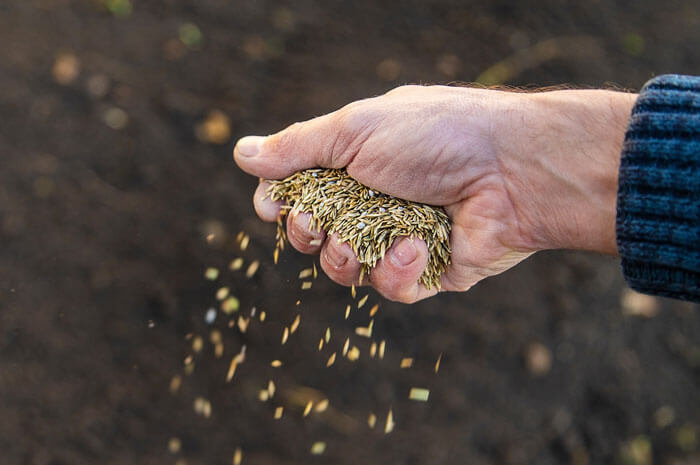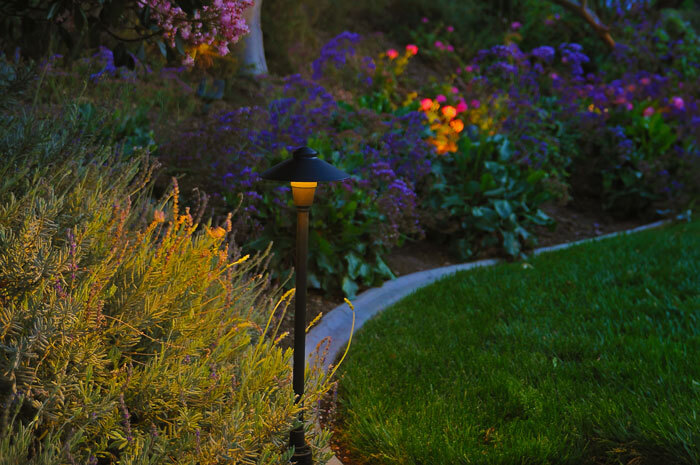
If you’re looking to plant a new lawn, it’s important to consider the best time of year to do it. After all, planting grass seed involves a lot of time, effort, and money, so it’s a good idea to strategize before making your investment.
With just a few careful considerations, you can find the perfect time to plant your grass seed, giving yourself, and your lawn, the best chance to succeed.
First Consider Your Growing Zone
Your climate is the single most important factor when figuring out the best time of year to plant your new lawn. There are cool-season grasses and warm-season grasses, each of which have unique growth cycles and optimal growing conditions. Cool-season grasses, such as Kentucky bluegrass, grow best under moderate temperatures, while warm-season grasses, such as Bermudagrass, grow best when it’s hot.
Generally, cool-season grasses are prominent in the upper half (or upper two-thirds) of the continental U.S. This includes the West, Midwest, and Northeast regions, along with West Virginia, Northern Kentucky, and Northern Virginia.
Warm-season grasses are found in the Southwest and Southeast regions of the country, although there is a thin transitional zone stretching through the upper part of the Southeast, along with Oklahoma and Northern Texas. This transitional zone can accommodate either cool-season or warm-season grasses.
The type of grass seed you buy should depend on your growing zone, giving you the right kind of lawn for your climate. The seed you choose, combined with your specific climate, will determine your best time to plant grass seed.
Planting Cool-season Grass Seed
Due to favorable weather conditions, the best time to plant cool-season grass seed is during the fall. This is not only due to moderate daytime temperatures, but also moderate soil temperatures.
While springtime weather can certainly provide the ideal air temperature for cool-season grass – around 60 to 75 degrees fahrenheit – soil often takes longer to heat up after cold winters. By contrast, fall soil remains relatively warm after months of summer heat. Fall’s combination of moderate air and soil temperatures creates the ideal conditions to plant cool-season grass.
However, it’s important to note, you should plant your new lawn no less than 45 days before the first frost. This will ensure the grass is strong and fully-rooted before cold temperatures set in.
If you can’t plant your cool-season grass seed during the fall, it is possible to do so during the spring, although it’s not ideal. You’ll want to use a soil thermometer to make sure your soil is up to temperature – around 50 to 60 degrees fahrenheit. As soon as the soil temperature reaches this threshold, it’s important to seed right away, allowing the grass to enjoy moderate weather before summer sets in.
Planting Warm-season Grass Seed
In contrast to cool-season grass, warm-season grass thrives during the heat of summer, when soil temperatures reach around 65 or 70 degrees fahrenheit, and air temperatures climb above 80.
Since warmer climates tend to reach these temperatures before summer, late spring is the best time to plant warm-season grass seed. This allows your grass to benefit from early season showers, then enjoy a full season of prosperous summer growth.
As you might expect, warm-season grass is more sensitive to low temperatures than cool-season grass, going dormant at around 55 degrees. It’s important for warm-season grass to become fully-rooted before cold weather sets in. It’s not recommended to plant Bermudagrass, Bahiagrass, Zoysia grass, or any other warm-season grass during the fall season.
Variations Within Growing Zones
Whether you’re living in a cool-season zone, transitional zone, or warm-season zone, the climate won’t be totally uniform throughout such large areas. So, leave some room for interpretation, adjusting when to seed based on your specific weather.
For instance, if you compare Minnesota and Northern California, both places require cool-season grass. However, Californians may be able to seed up until September or October, while Minnesotans might only be able to seed until August or September.
The same is true for seeding warm-season grass in the spring – different weather conditions require slightly adjusted timelines. To make these adjustments, simply monitor both soil and air temperatures, and pay attention to the weather forecast. This will give you an idea of your current growing conditions, as well as a sneak peek into future growing conditions.
No matter where you live, or what weather patterns you may be facing, finding the best time to plant grass seed simply involves a little strategizing. Knowing what kind of grass seed you’re working with will allow you to find the optimal season, along with the right soil and air temperatures, to grow a healthy, lush lawn.



